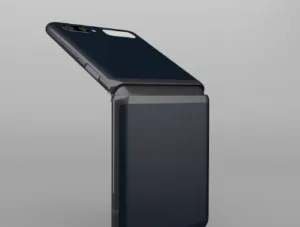When you purchase through links on our site, we may earn an affiliate commission. This doesn’t affect our editorial independence.
Foldable phones first came into the scene over 25 years ago in the shape of the 1996 Motorola StarTAC. However, over time, they were excused from the digital phone scene towards the end of the early 2000s. This was caused by Apple’s iPhone’s rise and various then-current BlackBerry handsets. However, fast-forward to today, and they’re back in the scene. Many high-quality foldable smartphones are dominating the market. Therefore, it is essential to know the pros and cons of foldable phones to make an informed purchase if you decide to get one.
What do you need to know about using a foldable smartphone? Should you swap your iPhone for a Microsoft Surface Duo 2 or your Samsung Galaxy S21 Ultra for a Galaxy Z Fold or the comparatively tiny Galaxy Z Flip? Here are the pros and cons of using foldable smartphones. You can also read a comparison between regular smartphones and foldable smartphones here.
The Pros of Foldable Smartphones
 The first and most notable feature of foldable smartphones is the form factor. They are larger when opened and reduce in size when folded. Due to this, they are up to twice the size of regular smartphones. Their ability to fold makes them suitable for tiny pockets and spaces while maintaining their functionality when unfolded. On the other hand, larger models grant users a more tablet-like experience on the go. They do so in a handset that folds to the size of a typical non-folding smartphone when not in use.
The first and most notable feature of foldable smartphones is the form factor. They are larger when opened and reduce in size when folded. Due to this, they are up to twice the size of regular smartphones. Their ability to fold makes them suitable for tiny pockets and spaces while maintaining their functionality when unfolded. On the other hand, larger models grant users a more tablet-like experience on the go. They do so in a handset that folds to the size of a typical non-folding smartphone when not in use.
Another advantage is the ‘cool factor’. For the non tech-savvy, this is probably the most important one when considering foldable phones. These phones are sure to be a conversation starter, and having one in your hand signals that you’re a tech enthusiast who’s keeping up with the latest and greatest in gadgetry.
Although most of the advantages of foldable phones are in the form factor, other benefits of foldable phones include; bigger long-lasting batteries, cutting edge tech, better entertainment options and improved multitasking abilities.
Cons of Foldable Smartphones
The first Con is the high price tag. As with any new technology, most foldable smartphones comes with a high price tag. Compared to conventional smartphones, foldable ones are currently priced at a premium, making them less accessible for a large portion of users.
Another disadvantage is the battery life which poses a challenge for foldable smartphones. Powering a larger display, especially one that needs to light up additional pixels when unfolded, requires more energy. This leads to a shorter battery life compared to traditional smartphones. This could be a significant trade-off for many potential buyers.
Finally, durability is another major concern for foldable phones. While most smartphone brands have made improvements to their foldable phones recently, they’re still more fragile than the traditional, non-foldable counterparts. Furthermore, even though they have been specially designed for it, these phones will still involve lots of folding and unfolding movements daily which puts stress to the mechanical parts. Therefore, users must be extra careful not to drop or damage these delicate devices, which could add to the stress of daily use.
When purchasing a foldable phone, it is best to take these factors into consideration before making a choice. Although foldable phones are a very interesting technology, it is a must to understand the pros and cons of foldable phones before owning one.







